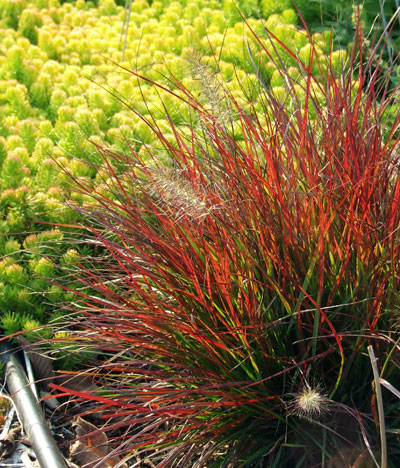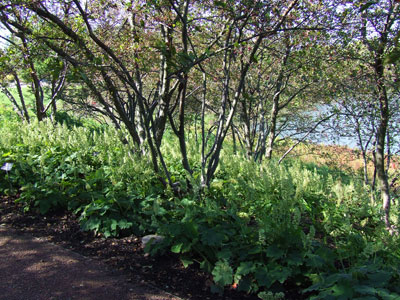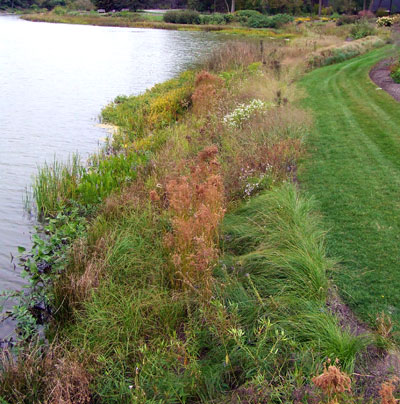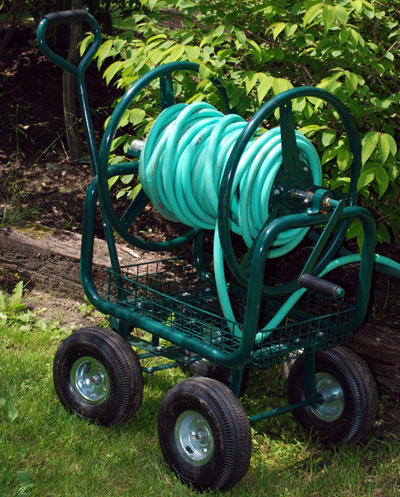Water-smart landscapes by design
Reduce the need for watering your landscape by using simple but smart tips.
 Planning a water-smart garden begins with understanding your site. Michigan’s landscape was carved out by glaciers leaving behind many different types of growing environments. Soils range from dense clay to gravelly sand that cling and shift to the undulating native terrain. Home gardens that begin with a soil test can be designed around the existing pH, soil type and texture. Visit www.msusoiltest.com to order your soil test today.
Planning a water-smart garden begins with understanding your site. Michigan’s landscape was carved out by glaciers leaving behind many different types of growing environments. Soils range from dense clay to gravelly sand that cling and shift to the undulating native terrain. Home gardens that begin with a soil test can be designed around the existing pH, soil type and texture. Visit www.msusoiltest.com to order your soil test today.
Understanding the water-holding capacity of your soil and the water needs of each plant type is the next step in creating your water-smart design. Incorporate organic matter such as compost or leaf mold into droughty soils and employ the qualities of water-holding mulches around beds or plants that are sited in these soils. When using organic mulches, take care to break up the top “crust” once a season. Mulches may become overly dry, making it difficult to re-wet, hence working against the garden instead of for it.
Thirst not: Choose the right plants
Plants with low moisture requirements are a gardener’s first defense against tough, dry sites. Many native, woody trees and shrubs are highly adaptable to the urban landscape as well. For example, understory shrubs such as bottle-brush buckeye or our native Diervilla can compete with surrounding plants and take a dry summer. Couple these types of shrubs with upland tree species such as the bur oak that can easily tolerate “feast or famine” conditions. Ideas for additional native woody plants can be obtained in the Smart Gardening article titled “Drought-tolerant plants save water, money and time.”
Perennials that have silvery foliage such as catmint (Nepeta sp.), Russian sage (Perovskia) and Yarrow (Achillea) ‘Moonshine’ are wise choices for areas that are droughty. Another group of succulent plants known as stonecrop (Sedum) provide a wide variety of colors, textures, heights and even low, ground-hugging habits. Splashes of color from bulbs can make a landscape plan exciting and add seasonal interest. Ornamental onion (Allium), many types of lilies and even tulips are great choices for a dry, sunny site.

Low-growing sedum like this ‘Angelina’ paired with an ornamental grass, pennisetum ‘Burgundy Bunny’ is thrifty as well as beautiful. Photo credit: Rebecca Finneran
Deeply rooted plants with native parentage such as false indigo (Baptisia), cup plant (Silphium) and goldenrod (Solidago) are also a great addition to a drought water-wise garden.
Get smart – be intentional!
During the design phase, plan to group plants with “like needs” together. If you are planning on using plants that require supplemental irrigation, fertilizer and nutrients, intentionally plant these together and to prevent your own frustration, plant them relatively close to a water source.
Shade-loving hostas, big-leaved Ligularia, sedges and lungwort tend to be “thirsty” perennials. Even in dense shade, most of them will wilt or yellow out during the long days of summer. Several plants like Japanese painted fern use dormancy as a defense mechanism, but quickly re-sprout when late-summer rains occur. Instead of eliminating these plants from your choices, plan to group them where you can concentrate your irrigation efforts.

Grouping plants such as Japanese forest grass and coral bells beneath shallow-rooted trees creates an environment where both can grow successfully. Photo credit: Rebecca Finneran
If you have droughty, full sun areas in the landscape, match plants to that space. Using graph paper, define existing conditions by drawing giant “bubbles” onto the plan. The bubbles will then mark the edge of a shady spot, excessively dry area, etc., where you can begin to group your plants according to their needs.
Consider alternatives to traditional turf grasses. Do we really need that palatial lawn? We care about our lawns, but evaluate how much lawn is really necessary to the overall design. Turfgrass requires a fairly high level of care including supplemental water and fertilizer. Large areas of lawn can be replaced with low-growing, rugged native grasses such as prairie dropseed (Sporobolus) or different types of sedge (Carex.) Mowing once a season would be fine for these plants that do not require any additional inputs.

Replacing lawn with expanses plants including tough natives at the water’s edge not only cuts down on watering and mowing, but also prevents run-off and sediment from entering the waterway.” Photo credit: Rebecca Finneran
When it rains
When you need to irrigate, plan to evaluate the efficiency and output of your sprinklers. Automatic watering systems can supply an excessive amount of water as well as cause the need for supplemental fertilization for some plants. Common sprinkler devices also may not apply an even spray of water, so be sure to check out the pattern to see where it is heavy or light.

Remember to group plants that have a high need for water near a source. Photo credit: Rebecca Finneran
Lastly, buy a rain gauge! If you know how much rain fell while you were sleeping, you will be much better at determining the needs of your garden plants.
For more information on a wide variety of Smart Gardening articles, or to find out about Smart Gardening classes and events, visit www.migarden.msu.edu.



 Print
Print Email
Email




